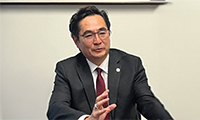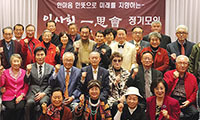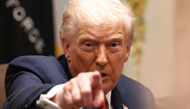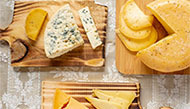The Afghan Leader’s Hat Is Losing Its Cachet
KABUL, Afghanistan - It once attracted the admiration of trendsetters in the West, the jests of comedians at home and abroad, and the somewhat impotent ire of animal rights advocates.
Hamid Karzai’s hat, while still firmly on the Afghan president’s head whenever he appears in public, is no longer quite the symbol it once was.
Known as a karakul hat, and made of the pelt of fetal or newborn lambs of the karakul breed of sheep, traditionally it was something worn by Tajiks and Uzbeks from northern Afghanistan. When Mr. Karzai, a Pashtun from the turban-wearing south, took office in 2002, the karakul hat was part of his attempt to devise a wardrobe that was Afghan rather than ethnic or regional.
It was a move widely praised at the time, in Afghanistan and abroad. The American designer Tom Ford called Mr. Karzai “the chicest man on the planet.” Afghans looking for national symbols after decades of ethnic strife inspired a brisk trade in the hats, made of lambskins from Mazar-i-Sharif in the north and fashioned by Kabul’s hatters, whose shops lined both sides of Shah-e-do Shamshera Wali Road.
Now, a tainted presidential election later, and with efforts to make a truly multiethnic government foundering, the sheen is off the fur headwear.
Young men no longer wear it; Mr. Karzai’s opponent in the aborted election runoff, Abdullah Abdullah, a northerner, preferred a hatless suitand- tie ensemble. All but 12 of the hatters shops have closed on Shamshera Road . Those remaining say they are lucky to sell a hat a day.
“I went back to my village in Logar wearing my karakul hat,” said Ahmed, an Afghan in his 50s, who was shopping for a new hat, “and people laughed: ‘There goes the old man who thinks he’s president.’ ”
Just as Mr. Karzai’s hat is more than just a hat, the reaction against it is more than just a fashion whim. “It would have been better if he just wore a turban. It would have been more honest,” said Rahnaward Zariab, a novelist and cultural commentator on Tolo TV in Kabul. “Instead he deceived the nation. The costume of Karzai doesn’t mean anything; it’s not a symbol anymore. Now we are seeing his actions, and it’s clear now that he is a Pashtun.”
Mr. Zariab complained that there were relatively few non-Pashtuns in Mr. Karzai’s new cabinet, which is yet to be completely approved by Parliament.
Efforts to solicit a comment from the president on his headgear met with no success, and slight annoyance. “Everything else is finished with,” said his spokesman, Waheed Omer, “Now you’re going to write about the hat?”
Mr. Karzai once explained his affection for the hats. “I wear them because they are very, very Afghan,” he said, according to an Associated Press account. “And if it looks good, all the better.”
Among the hatters, the president still gets rave reviews for his good taste. He is also one of their best customers.
Mr. Karzai’s affection for the karakul hat is so strong that, if the hatters’ accounts are to be believed, he has purchased dozens of them since taking office. Sayed Habib Sadat, owner of one of the remaining hat shops on Shamshera Road, says he has sold Mr. Karzai 15 karakul hats .
“The president is bringing the old traditions together and showing people: ‘I’m an Afghan. I’m using my own tradition,’ ” Mr. Sadat said. “It’s been good for him, and for us.”
스마터리빙
more [ 건강]
[ 건강]이제 혈관 건강도 챙기자!
[현대해운]우리 눈에 보이지 않기 때문에 혈관 건강을 챙기는 것은 결코 쉽지 않은데요. 여러분은 혈관 건강을 유지하기 위해 어떤 노력을 하시나요?
 [ 건강]
[ 건강]내 몸이 건강해지는 과일궁합
 [ 라이프]
[ 라이프]벌레야 물럿거라! 천연 해충제 만들기
 [ 건강]
[ 건강]혈압 낮추는데 좋은 식품
[현대해운]혈관 건강은 주로 노화가 진행되면서 지켜야 할 문제라고 인식되어 왔습니다. 최근 생활 패턴과 식생활의 변화로 혈관의 노화 진행이 빨라지고
사람·사람들
more많이 본 기사
- 쿠란 들고 선서한 뉴욕시장, 취임하자마자 이스라엘과 충돌
- “트럼프 슈퍼팩, 3억 달러 넘는 중간선거용 ‘실탄’ 비축”
- 스위스 화재 부상자 80명 위독… “샴페인 폭죽서 발화”
- “박나래, 차에서 남성과 ○○ 행위+운전석 발로 차”..주사이모 정체도 발각
- 배우 앤젤리나 졸리 가자지구 라파 검문소 깜짝 방문
- 尹 내란 재판 예정대로 9일 변론 종결…내주에만 나흘 재판
- 트럼프, 휴가 막바지에 대리석 쇼핑…백악관 대형 연회장 장식용
- 해외 송금시 1% 세금 1월1일부터 부과 개시
- 한인 마켓에서 사라진 ‘플라스틱 봉투’
- 고급백화점 자금난에 파산보호 검토…CEO도 전격 교체
- 변종 수퍼독감 ‘비상’ 사망자 3,100명 넘어
- ‘대단한’ 오타니, 아무리 못 쳐도 ‘홈런 1위 탈환’ 예상! 4년 연속 MVP도 가능하다
- 새해전야 ‘IS 순교작전’ 계획한 美 청년, FBI 위장수사에 덜미
- 온라인에 가짜 광고 ‘렌트 사기’ 기승
- ‘불륜 의혹’ 상간남 “피해자+마녀사냥”..숙행 감싸다 역풍만 커졌다
- 시니어 ‘최소인출’ 미준수… 세금 불이익
- 또 일가족 살해·자살 4명 시신 발견 ‘비극’
- 美국방부, 평택 아파치부대 관련 “어떤 결정도 안내려져”
- 트럼프 “관세 부과 능력 잃는다면 미국에 심각한 타격될 것”
- 국힘 “더 심한 사안 나오기 전 사퇴”…점점 세지는 李낙마 공세
- 李대통령 “저 역시 ‘하나의 중국’ 존중…韓中 정상 매년 만나야”
- “새해 복 많이 받으세요!” 2026 ‘병오년’ 힘찬 출발
- ‘메시보다는 손흥민과...’ 美 전역 SON에 푹 빠졌다! 무려 500명 대상 ‘가장 뛰고 싶은 팀’ LAFC 선정
- 뉴욕증시, 기술주 희비가 촉발한 급변동성…혼조 마감
- 오바마케어 보조금 확대 결국 종료… 새해 최대 쟁점으로
- 연말 샤핑 ‘역대 최고’ 사상 첫 1조달러 돌파
- 건강보험 보조금 종료…중간선거 낀 새해 최대 정치쟁점으로
- 연초 멕시코 뒤흔든 6.5 지진… “대피 중 1명 사망”
- 미 거주 한인 255만명… 전세계 최다
- 트럼프, 가구 관세 인상 1년간 연기
- ‘조작기소’ 비판속 항소 최소화 고육책 檢…선택적 항소 지적도
- ‘255만 7,047명’ 미국내 한인… 1
- 뉴욕증시 뜨거웠던 2025년 ‘아듀’… 새해도 기대
- ‘평양 무인기 의혹’ 윤석열 추가 구속…尹측 “자판기 영장” 반발
- 새해 첫날 대형화재 참사… 155명 … 1
- [김재천 칼럼] 2026년, 미·중 대타협은 가능할까
- 활동적 은퇴자 급증…한인시니어센터 “다 찼어요”
- 트럼프 “이란 시위대 살해하면 구출”…이란 “내정 간섭”
- 범키 “마약 문제 책임감 느껴”..마약류대책협의회 민간위원 위촉
- 김민선 백악관 역사위 자문위원 위촉 축하 행사
- 은퇴는 끝이 아니라 또 하나의 출발선
- 건국 250주년 워싱턴 모뉴먼트 라잇쇼
- 대한항공, 새해 첫 고객맞이 행사
- 뉴욕한인회 김동민 고문 변호사 문영운… 2
- 연준 12월 금리인하… ‘만장일치 실패’
- 중부 캘리포니아 ‘한인 이민사’ 나왔다
- [금요단상] 차가운 길, 이불 한 장의 온기
- 中업체에 1위 내준 테슬라, 작년 전기차 인도 8.6%감소한 164만대
- “홍명보호 32강은 가지만 16강은 쉽지 않다” 전문가들 전망 [2026 도전 월드컵]
- [각계 신년메시지] “희망찬 새해, … 1
1/5지식톡

-
 미 육군 사관학교 West Poin…
0
미 육군 사관학교 West Poin…
0https://youtu.be/SxD8cEhNV6Q연락처:wpkapca@gmail.comJohn Choi: 714-716-6414West Point 합격증을 받으셨나요?미 육군사관학교 West Point 학부모 모…
-
 ☝️해외에서도 가능한 한국어 선생님…
0
☝️해외에서도 가능한 한국어 선생님…
0이 영상 하나면 충분합니다!♥️상담신청문의♥️☝️ 문의 폭주로 '선착순 상담'만 진행합니다.☎️ : 02-6213-9094✨카카오톡ID : @GOODEDU77 (@골뱅이 꼭 붙여주셔야합니다…
-
 테슬라 자동차 시트커버 장착
0
테슬라 자동차 시트커버 장착
0테슬라 시트커버, 사놓고 아직 못 씌우셨죠?장착이 생각보다 쉽지 않습니다.20년 경력 전문가에게 맡기세요 — 깔끔하고 딱 맞게 장착해드립니다!장착비용:앞좌석: $40뒷좌석: $60앞·뒷좌석 …
-
 식당용 부탄가스
0
식당용 부탄가스
0식당용 부탄가스 홀세일 합니다 로스앤젤레스 다운타운 픽업 가능 안녕 하세요?강아지 & 고양이 모든 애완동물 / 반려동물 식품 & 모든 애완동물/반려동물 관련 제품들 전문적으로 홀세일/취급하는 회사 입니다 100% …
-
 ACSL 국제 컴퓨터 과학 대회, …
0
ACSL 국제 컴퓨터 과학 대회, …
0웹사이트 : www.eduspot.co.kr 카카오톡 상담하기 : https://pf.kakao.com/_BEQWxb블로그 : https://blog.naver.com/eduspotmain안녕하세요, 에듀스팟입니다…
케이타운 1번가
오피니언
 손영아 문화 칼럼니스트 / YASMA7 대표
손영아 문화 칼럼니스트 / YASMA7 대표 [손영아의 문화산책] ‘슈만의 연가’… 170년 전 멈춘 시간, 끝나지 않은 사랑
 김재천 서강대 국제대학원 교수
김재천 서강대 국제대학원 교수 [김재천 칼럼] 2026년, 미·중 대타협은 가능할까
 조지 F·윌 워싱턴포스트 칼럼니스트
조지 F·윌 워싱턴포스트 칼럼니스트 [조지 F. 윌 칼럼] AI 투자 붐이 걱정된다면?… 역사적 맥락을 보라
 이희숙 시인·수필가
이희숙 시인·수필가 [금요단상] 차가운 길, 이불 한 장의 온기
 한영일 / 서울경제 논설위원
한영일 / 서울경제 논설위원 [만화경] 33년만에 퇴역하는 장보고함

[왈가 왈부] 이혜훈 ‘정말 널 죽였으면’ 폭언, 장관직 수행 가능할까요
 정숙희 논설위원
정숙희 논설위원샴페인, 마지막 날과 첫날을 위하여
 조지 F·윌 워싱턴포스트 칼럼니스트
조지 F·윌 워싱턴포스트 칼럼니스트 [조지 F. 윌 칼럼] 저무는 2025년에 안도의 한숨
 김동찬 시민참여센터 대표
김동찬 시민참여센터 대표 [미국은 지금] 책임 있는 자본 없으면 커뮤니티 미래도 없다
1/3지사별 뉴스

뉴욕시 첫 무슬림 시장 맘다니 취임
미국 최대도시이자 경제 수도로 꼽히는 뉴욕시의 첫 무슬림·남아시아계 시장이자 스스로를 민주사회주의자라고 부르는 조란 맘다니 신임 뉴욕시장이 새…
뉴욕시민 기대수명 82.6세⋯팬데믹 이전 회복

건국 250주년 워싱턴 모뉴먼트 라잇쇼
워싱턴 DC 내셔널 몰 중심에 위치한 워싱턴 모뉴먼트(Washington Monument)가 화려한 불빛으로 장식됐다. 지난 31일 새해 카운…
“소확행<작지만 확실한 행복> 즐겨요”

병오년 2026년 시작을 알리는 꽃가루
지난달 12월 31일 뉴욕 타임스퀘어 에서 열린 볼 드롭 행사에서 찬란한 볼이 새해를 알린 직후 2026년 1월 1일 0시를 기해 이날 메인 …
중부 캘리포니아 ‘한인 이민사’ 나왔다
오늘 하루 이 창 열지 않음 닫기 




















































.png)


댓글 안에 당신의 성숙함도 담아 주세요.
'오늘의 한마디'는 기사에 대하여 자신의 생각을 말하고 남의 생각을 들으며 서로 다양한 의견을 나누는 공간입니다. 그러나 간혹 불건전한 내용을 올리시는 분들이 계셔서 건전한 인터넷문화 정착을 위해 아래와 같은 운영원칙을 적용합니다.
자체 모니터링을 통해 아래에 해당하는 내용이 포함된 댓글이 발견되면 예고없이 삭제 조치를 하겠습니다.
불건전한 댓글을 올리거나, 이름에 비속어 및 상대방의 불쾌감을 주는 단어를 사용, 유명인 또는 특정 일반인을 사칭하는 경우 이용에 대한 차단 제재를 받을 수 있습니다. 차단될 경우, 일주일간 댓글을 달수 없게 됩니다.
명예훼손, 개인정보 유출, 욕설 등 법률에 위반되는 댓글은 관계 법령에 의거 민형사상 처벌을 받을 수 있으니 이용에 주의를 부탁드립니다.
Close
x